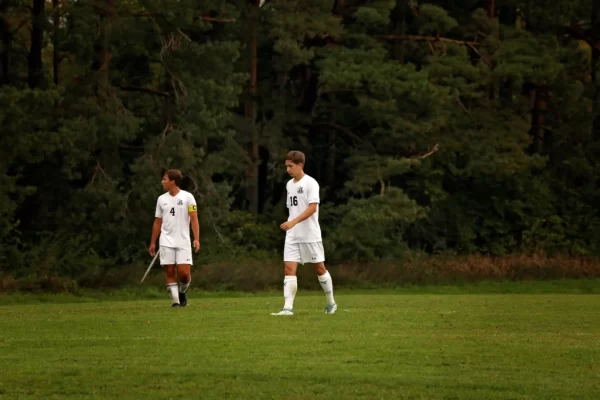Playing in the Pandemic
October 14, 2020
The Covid-19 pandemic has disrupted daily life on a scale never seen before, including school sports, with almost all fall-season athletics postponed to the spring. Among these pandemic-postponed sports is Cross Country — a sport that is often thought of as being contact-free and socially-distanced, and, therefore, especially suitable for the current times. Unfortunately for runners, this is not actually the case.
The Cross Country teams typically practice in groups of four to ten people. During off-campus runs, which are a near-quotidian occurrence, these groups usually clump together, well within six feet of each other, to better keep pace and interact. Runs like this are definitive of Cross Country. With Covid-19, however, coming together within six feet is discouraged, and typical groups are broken apart into grade-level cohorts, shattering the normal Cross Country experience.
Traditions and routines have also been broken. In a normal year, practice starts in August, at Normanskill, with preseason. There, the team gets to know Cross Country as a sport — filled with gravel paths and grassy hills, it is the culmination of the hardest parts of any Cross Country course. One particular workout, titled the “Seven Hills of Rome”, involves sprinting up seven of Normanskill’s most grueling ascents with minimal break and is almost a rite of passage to the Cross Country team. To balance these tough practices, each preseason practice is also accompanied by several gallons of chocolate milk at the end of practice, and, at the conclusion of the Seven Hills, the team runs to get ice cream. Both the challenges and the rewards, integral to Cross Country, have made Covid-19 all the more disruptive when they ceased to exist.
Masks, too, have become a point of contention. Prior to the pandemic, running even two miles in a mask was unthinkable. Now, it has become standard to do everything, both in sports and out, with a mask on. In Cross Country, short and long runs, workouts, and even stretching, have become masked activities. Though they are manageable in short or easy runs, masks become sticky heat-traps with longer distances or more intense workouts. It is now not uncommon to have to peel a mask off of one’s face following a particularly tough practice, something that would have been ridiculous just seven months ago.
Lastly, there is the lack of any competitions, with no meets and no races. Ostensibly, this simply means that the Cross Country Teams no longer have to wait for hours in windy fields in the morning before a race goes off. Beyond that, however, this means that there is no tangible or pressing goal to work towards. Workouts lose much of their meaning and purpose — no longer is that five-by-one-thousand-meter workout done for the sake of placing in the top ten in the next meet. As a result, the sport has lost much of its intensity and rigor, much of the competitiveness that many runners love. The Covid-19 pandemic has, at the very least, fundamentally changed the sport of Cross Country.

